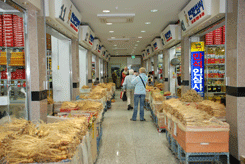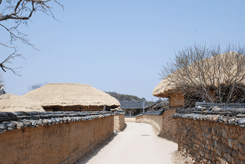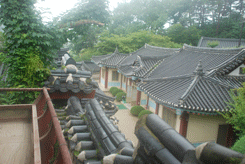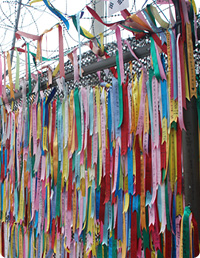Seat In Coach
Andong 2 days



Tour Highlights
- Buseoksa Temple
- Ginseng Market
- Hahoemaeul Village
- Dosanseowon Confucian Academy
We book this tour through subcontracted out to other tour companies. Therefore the tour quality, conditions and prices by their nature may vary company to company.
Arrival complications
Sometimes the unexpected can happen; If you have missed your tour departure, first call the relevant emergency number and speak to our staff who will be happy to help you catchy up with the group. Please note that you are responsible for any extra travelling expenses incurred due to you missing your tour’s departure, so please be on time.
Day 1 Seoul - Yeongju - Punggi - Andong (- - -) 290km
You join the tour with other tourists at the designated point to explore
Buseoksa, a temple on the floating stone. It is a bit out of the way, but worth the trip. It was established in 676 by the monk Uisang after he had returned from China, bringing with him the teachings of Hwaeom Buddhism. 108 steps that symbolize 108 sufferings and evil passions lead visitors to the main hall - Muryangsujeon, the second-oldest wooden structure in Korea. Enshrined here is the 7th century Amitabha Buddha with the earth-touching and evil-expelling hand posture. A stone lantern made during Unified Silla period stands in the front and to the west of the hall, at the bottom of a steep bluff, lies the legendary floating stone. To the east is a three-story pagoda behind which is a pavilion dedicated to the Chinese girl who, in the form of a dragon, helped Master Uisang. In addition, the temple has many treasures, stone pagodas, the flagpole supports, the Goryeo wood-blocks, the stupa in which the remains of famous monks are kept, and some of the mural paintings which have survived Korea's turbulent history.
Then onto Andong, the home of Korea's Confucian culture. While in Punggi, experience ginseng market which has a good smell, better than it tastes. This mysterious root is considered a cure-all; effective in recovering the liver's functions, improving anticancer and immunity functions, and treating diabetes, hypertension, low blood pressure and stress. There are small stalls in the building type market, all of which has piles of fresh ginseng roots, ginseng preserved in wine in fancy bottles, dried ginseng, tea, extract, candy, and honey ginseng slices. There are also many shops along the street leading out from the painfully quiet train station. Street vendors sell flowers, fruits, food stuff and home grown grains and vegetables. All these features mixed offer a rural ambience of Korea's remote town.
Day 2 Andong - Seoul (B) 260km
Explore the UNESCO World Heritage Site of Haehoemaeul. Nestled in a bend of the Naktong River, it is the best preserved traditional village portraying and spanning the life of the Joseon Dynasty (1392-1910). It is one of the few remaining examples of a classical Confucian village layout and some 480 Korean traditional houses, both large and small, are still fully functioning. Unlike many Korean villages where all the houses face south, the dwellings in this community are oriented in all four cardinal directions each capturing a unique aspect of the theatre beyond.
Graced by raised gates representing the power and social status of the clan, the tile roofed Yangban houses stand serenely and impressively in the central part of the village. In contrast, the thatched roof huts of the common people encircle them. You cannot possibly miss an old zelkova tree, the home to the village spirit. At the tree's base is where residents still make their wishes. The village is also known for many traditional festivals including the Hahoe Mask Dance which gave common people the opportunity to mock those in authority, and in particular the Byeolsingut, a shaman ritual exorcising evil spirits, dating back to the ancient Goryeo dynasty (918-1392).the best preserved traditional village portraying the lives of the Joseon Dynasty (1392-1910).
Later, you also tour Dosan Seowon, a Confucian-shrine academy. Set by the lake in its front and dense pine forests to the rear, it was where a revered philosopher and scholar, Yi Hwang (1501-1570) after his officialdom in 1549, built lecture hall to educate the students and study Neo-Confucianism for himself. Dosan Seowon was established in 1574 to commemorate his scholarship and virtue by some of his disciples and other Confucian authorities. Later, it became the center of the Confucianism in the region when it was granted the status of court-sponsored academy in 1575. The facility is composed of 16 buildings most of which were built in a simple and concise style. About hundreds of Seowon were functioning by the early 1800s, but then most of them were destroyed around 1870 by the court order. Dosan Seowon is among some of the few survived academies. Although the educational function of the facility has long since ceased, the commemorative ceremonies have been and are still held twice a year. Early afternoon return transfer to Seoul.
Remarks
The tour is subject to operation with minimum four persons and will be conducted in English






